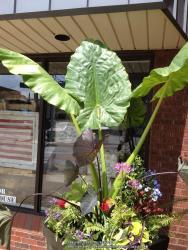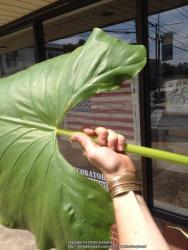I swear it didn't take 2 years for this to sink in!

but I do feel like it's a never ending journey of learning, wrapping ones mind around the complexities of this genus!
Any way 2 years later... I find a mature mac.!
I spotted it from almost a block away and pinned it as different from what I've always grown!
It looks pretty rippled, the way a Borneo giant is known for, I wonder what it is... I guess I better just try to get it...
That way I'll know for sure




A perfect V, no leaf between the lobes at all!
@lariann
To further clarify, when you say that this lack of sinus leaf tissue rule doesn't hold up to other non mac. types, you simply mean that just because an alocasia doesn't have leaf in the sinus, that doesn't inherently mean that plant has mac. In its lineage. Is that what you meant?


